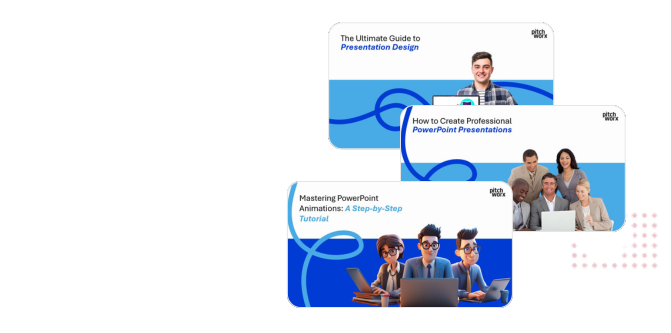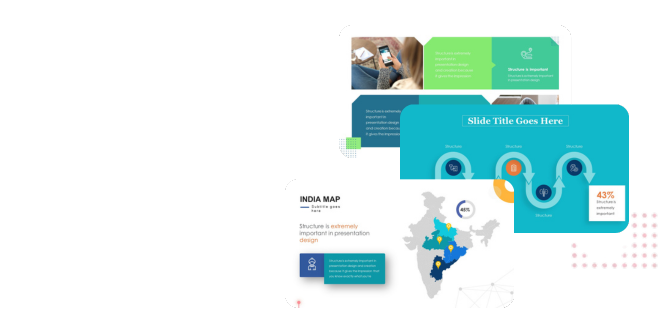Quick Answer: Why Your PowerPoint Images Look Blurry
PowerPoint defaults to 96 DPI for exported images, which looks acceptable on screens but terrible in print or when zoomed on high-resolution displays. Professional quality requires 300 DPI or higher. The resolution issue affects exported PNGs, JPEGs, and other image formats, but can be fixed through registry modifications (Windows), Save As settings, third-party conversion tools, or professional design services.
Table of Contents
Introduction: The PowerPoint Resolution Problem
You’ve spent hours perfecting your PowerPoint presentation. Every slide looks crisp on screen. But when you export images for your website, social media, or print materials, they come out blurry and pixelated. Sound familiar?
This frustration affects millions of users worldwide—from startup founders creating pitch deck graphics to marketing teams exporting visuals for campaigns. The culprit? PowerPoint’s default image export settings cap resolution at just 96 DPI (dots per inch), far below the 300 DPI standard needed for professional print quality or sharp digital displays. The good news: PowerPoint can export images at much higher resolutions—you just need to know the right techniques.
Why High-Resolution Image Export Matters
High-resolution images are critical for print materials, digital platforms, and maintaining professional branding. Blurry visuals can damage brand perception and reduce credibility.
Current Trends: India vs USA
USA Trends (2025): 76% of U.S. businesses now require 300+ DPI for marketing materials, with increasing demand for 4K-ready graphics.
India Trends (2025): A growing startup ecosystem is increasing demand for professional pitch deck graphics, with a mobile-first content strategy prioritizing optimized high-res images.
Understanding PowerPoint’s Default Resolution Settings
PowerPoint’s default behavior exports images at 96 DPI. Professional print requires 300 DPI, and premium formats may need 600 DPI. PowerPoint supports up to 307 DPI natively, with workarounds for higher resolutions.
Method 1: Change PowerPoint DPI via Registry (Windows) – Most Powerful
This method permanently changes your PowerPoint export resolution settings. Close PowerPoint, open `regedit`, navigate to the PowerPoint `Options` key, create a new `DWORD (32-bit) Value` named `ExportBitmapResolution`, and set its Decimal value to 300.
⚠️ Warning: This method is for Windows only and requires care when editing the registry. The maximum supported value is 307 DPI.
Method 2: Save Individual Slides as High-Res Images (Windows & Mac)
Select your slide, click “File” → “Save As”, and choose PNG, JPEG, or TIFF as the format. This method uses your modified registry setting on Windows or the default resolution on Mac.
Method 3: PowerPoint to PDF to High-Res Image (Cross-Platform Hack)
This workaround bypasses PowerPoint’s resolution limits. First, export your presentation as a high-quality PDF (“Best for printing”). Then, use a tool like Adobe Acrobat, a free online converter (PDF2PNG.com), or free desktop software (GIMP) to convert the PDF pages into high-resolution images (300-600 DPI).
Method 4: Using VBA Code for Automated High-Res Export (Advanced)
For automated batch exports, open the VBA editor (`Alt + F11`), insert a new module, and paste a script that loops through each slide and exports it at a specified pixel dimension (e.g., 3000×2250 for 300 DPI). This method provides precise control and can exceed the 307 DPI limit.
Method 5: Professional Design Services for Enterprise Needs
For businesses requiring consistent, high-quality exports at scale, professional services offer reliable solutions. PitchWorx is a leading presentation design agency specializing in high-resolution deliverables, custom template design, and batch processing for startups and enterprises.
For visual learners, PitchWorx maintains an extensive YouTube channel with step-by-step video tutorials covering PowerPoint resolution issues and export hacks. Search “PitchWorx PowerPoint high resolution” on YouTube for their latest guides.
Essential Hacks for Maximum Image Quality
- Start With High-Quality Source Images: Never insert low-res images expecting PowerPoint to improve them.
- Use PNG for Graphics, JPEG for Photos: Choose the right format for your content.
- Disable Compression: Go to File → Options → Advanced and check “Do not compress images in file”.
- Test Before Bulk Export: Always export one test slide first to verify resolution.
- Use “Save Selection As Picture”: For specific objects, right-click and “Save as Picture” for cleaner results.
- Upscale with AI Tools: If you’ve already exported at low resolution, use free tools like Upscayl to improve appearance.
Free Tools Comparison Table
| Tool | Platform | Max DPI | Ease of Use | Cost | Best For |
|---------------|---------------|-----------|-------------|------|---------------------|
| Registry Edit | Windows | 307 | Moderate | Free | Permanent solution |
| PDF2PNG | Web | 600 | Easy | Free | Quick conversions |
| GIMP | Win/Mac/Linux | Unlimited | Moderate | Free | Full control |
| SmallPDF | Web | 300 | Very Easy | Free | Beginners |
| VBA Macro | Win/Mac | Unlimited | Hard | Free | Automation |
Common Mistakes to Avoid
Avoid inserting already compressed images, ignoring color space (RGB for digital, CMYK for print), not checking the final output quality, and using screenshots instead of proper export methods.
Troubleshooting Common Issues
If your export still looks low-res, ensure the registry value was set in Decimal, clear the cache, and verify your source content was high-resolution. If PowerPoint crashes, reduce the DPI or export slides individually.
Step-by-Step Workflow: From PowerPoint to Print-Ready
A professional workflow includes: preparing slides with high-res assets and correct dimensions, configuring your chosen export method to 300 DPI, executing the export, and performing post-processing checks for quality and color space.
Future Trends: AI-Powered Export & Cloud Processing
Expect future versions of PowerPoint to include AI-enhanced exports with one-click “Export for Print” options, cloud-based processing to handle large files, and platform-specific optimization presets for social media.
Frequently Asked Questions
Can I export PowerPoint images above 307 DPI?
Yes, by using the PDF-to-image conversion method or VBA macros with custom pixel dimensions, you can achieve 600+ DPI.
What’s the best DPI for social media?
For most platforms, 220 DPI is the sweet spot. It provides sharpness without creating unnecessarily large files that will be compressed anyway.
Does Mac PowerPoint support high-resolution export?
Mac PowerPoint exports at a higher default (220 DPI) but lacks a registry editor. For higher resolutions, use the PDF-to-image or VBA methods.
How do I know what DPI my exported image is?
On Windows, right-click the image → Properties → Details. On Mac, right-click → Get Info → More Info. You can also check in any image editor.
About This Tutorial Series
This guide is part of PowerPoint Mastery 2025 – Complete Tutorial Series by PitchWorx, designed to transform your presentation skills from beginner to professional level.
Series Progress:
- Class 6: How to Mask Images with Shapes in PowerPoint
- Class 7: How to Create a Duotone Effect in PowerPoint
- Class 8: How to Add Hyperlinks in PowerPoint
- Class 9: How to Export PowerPoint with Embedded Fonts
- Class 10: How to Add Fade In & Fade Out Animation in PowerPoint
- Class 11: How to export images in higher resolution in Powerpoint (Current)
- Next Class 12 : How to Auto-Fit Text in PowerPoint Without Overflow
About PitchWorx
PitchWorx is a professional presentation design agency specializing in creating impactful business presentations. Our alignment techniques are used by Fortune 500 companies worldwide.
Our Alignment Expertise:
- Corporate presentation standardization
- Brand-compliant layout systems
- Multi-slide consistency management
- Professional design consultation
Ready for presentation perfection? Contact PitchWorx for expert presentation design services.
Related Tutorials
Previous: How to Add Fade In & Fade Out Animation in PowerPoint – Class-10
Next: How to Auto-Fit Text in PowerPoint Without Overflow – Class-12
Series: PowerPoint Mastery 2025 – Complete Tutorial Series
Conclusion: Crystal-Clear PowerPoint Exports Made Easy
Exporting high-resolution images from PowerPoint is achievable with the right techniques. Whether you choose the registry method, PDF conversion, VBA macros, or professional services like PitchWorx, you now have multiple pathways to crystal-clear exports.
Your action steps are to choose a method, test it, apply it, and save the process for future use. The difference between blurry and brilliant is just one proper export away.













